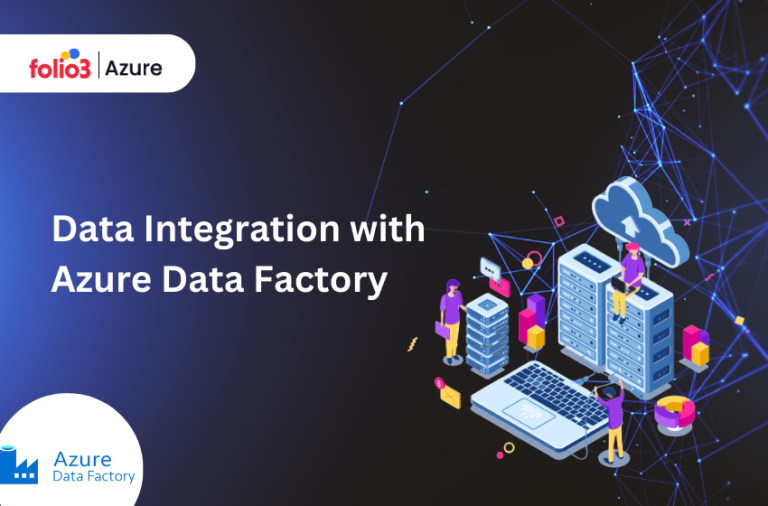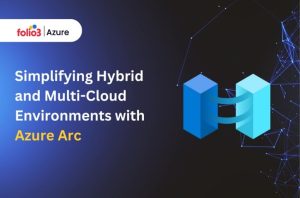Table of Contents
ToggleIn today’s digital world, data is super important for businesses. It helps them make decisions, make customers happy, and come up with new ideas to stay competitive. But the tricky part is handling and putting together data from lots of different places. This can be really hard. That’s where Azure Data Factory (ADF) comes in to help. In this guide, we’ll explain how ADF works and show you how it makes putting together data easy. It’s a valuable data integration tool for businesses in our data-driven world.

What is Data Integration?
Data integration is a complex task. It involves bringing data together from different places, making it look the same, and then using it for analysis and reporting. This is really important in business today because there’s so much data coming from all sorts of places like databases, cloud apps, and lots of different Internet-connected devices.
Significance of Data Integration
Data integration plays a pivotal role as the backbone of data-driven decision-making. It empowers organizations to:
- Unify Data Sources:
- Easily bring together data from many different sources, including those in your office and on the internet, to create one organized data system.
- Data Transformation: Transforming raw data into a usable format involves a multifaceted process that includes various essential steps such as data transformations, meticulous cleaning, and thoughtful enrichment.
- Data Loading: Put the carefully prepared data into a specific place where it can be studied and reported on. This place is often a data warehouse or a data lake designed for this purpose.
- Automation: Make data integration automatic and efficient. This way, important data is always current and ready for quick decisions and analysis.
What is Azure Data Factory?
ADF is a great cloud service from Microsoft Azure. It makes it easy to create and manage data pipelines for integrating data. It’s good at handling tasks like moving and transforming data efficiently. It’s a top choice for organizations that want to make their data work for them and streamline their data processes to succeed.
Core Components of Azure Data Factory
To gain a comprehensive understanding of how ADF operates effectively, it’s crucial to delve into and thoroughly grasp its core components:
- Data Pipelines: These fundamental components serve as the building blocks of ADF. Pipelines, in particular, play a pivotal role by defining the data flow and orchestrating the seamless movement and transformation of data.
- Data Sets: Data sets, an integral component of data integration, serve as the encapsulation of data structures within the data stores, meticulously defining the schema, structure, and precise location of the data.
- Linked Services: Linked services play a pivotal role within the Azure Data Factory ecosystem. These services serve as vital connections to external data sources or destinations, housing not only connection strings but also a myriad of other essential information that equips ADF with the capabilities to seamlessly interact with a diverse array of external systems.
- Triggers: Triggers play a pivotal role in automating data factory pipeline execution, functioning based on predefined schedules or events, thereby ensuring that data integration processes remain consistently up-to-date.
Key Features and Capabilities of Azure Data Factory
ADF provides a comprehensive array of features and capabilities that effectively simplify data integration:
- Connectivity: ADF exhibits its versatility by supporting an impressive array of data sources and destinations. These encompass not only on-premises systems and cloud storage but also an assortment of various data services. This extensive range of connectivity options empowers organizations to seamlessly carry out data integration from diverse origins into their data workflows, offering flexibility and scalability for their data integration needs.
- Data Transformation: Azure Data Factory (ADF) has impressive data transformation abilities. It allows you to easily change how data looks and works. You can do this without needing to write complicated code. You can use a simple interface or write your own code using languages like Python and SQL.
- Data Movement: ADF empowers efficient data movement through parallel processing, ensuring exceptionally high performance, even when handling substantial datasets.
- Monitoring and Management: Strong tools for keeping an eye on things and managing them are crucial. They help you watch how pipelines work, quickly fix problems, and make things run better, so your data work goes smoothly.
- Security: Azure Data Factory is remarkable for its strong security measures. It includes things like connecting with Azure Active Directory, using advanced encryption, and carefully controlling who can access what.
Benefits of Azure Data Factory
1 . Cost-Effective Data Integration
ADF’s serverless architecture is a true boon, as it ensures that you only pay for the precise resources you consume, making it remarkably cost-effective for organizations of all sizes.
2. Scalability
It scales seamlessly to handle growing data integration needs, effortlessly accommodating a wide spectrum of data volumes. Whether you’re dealing with relatively modest datasets or grappling with massive, enterprise-scale data, ADF can capably handle the workload, ensuring that your data integration processes remain efficient and responsive to your evolving data demands.
3. Integration with Azure Ecosystem
As an integral component of the Azure ecosystem, ADF seamlessly integrates with various other Azure services, fostering a harmonious connection with critical platforms such as Azure Data Lake Storage, Azure SQL Data Warehouse, and Azure Databricks.
4. Code-Free Data Transformation
With the remarkable visual data wrangling capabilities of ADF, you can effortlessly perform complex data transformations without the need to write a single line of code, thus significantly expediting the entire integration process.
5. Reliability
Microsoft Azure has forged a sterling reputation for reliability, and this extends seamlessly to ADF. This unwavering commitment to reliability ensures that your critical data integration processes not only run smoothly but do so without any disruptive interruptions.
Common Use Cases for ADF
Azure Data Factory is an exceptionally versatile tool with an extensive array of applications:
- Data Warehousing: ADF can be effectively employed to load data into data warehouses such as Azure SQL Data Warehouse or Snowflake, thus enabling advanced analytics and reporting capabilities that are pivotal for informed decision-making and business intelligence in today’s data-driven landscape.
- Real-Time Data Processing: It provides robust support for real-time data integration scenarios, rendering it exceptionally well-suited for a wide array of applications, including IoT data management, fraud detection, and monitoring systems.
- Cloud Migration: Azure Data Factory simplifies the intricate process of migrating on-premises data to the cloud, guaranteeing a seamless and hassle-free transition.
- Data Lake Management: ADF demonstrates its prowess by efficiently handling the movement and transformation of data within Azure Data Lake Storage, thereby playing a pivotal role in helping organizations effectively manage and optimize their data lakes.
- Hybrid Scenarios: It exhibits a remarkable capability to seamlessly integrate data from both on-premises and cloud sources, rendering it exceptionally well-suited for hybrid IT environments. This unique feature ensures that data integration across diverse platforms, whether they reside on physical servers within your organization or in the cloud, is executed with remarkable ease and efficiency.
Conclusion
In today’s data-driven world, efficient data integration is paramount. Azure Data Factory simplifies this process, allowing organizations to harness the power of their data for informed decision-making, improved customer experiences, and innovation. With its extensive features, scalability, and seamless integration with the Azure ecosystem, ADF is a valuable tool for businesses of all sizes. Folio3 provides complete data analytics solutions to simplify the process of embracing ADF and streamlining your data integration processes to unlock the full potential of your data. Start simplifying your data integration journey today with ADF’s powerful data factory pipelines and Azure Data Factory’s capabilities.


